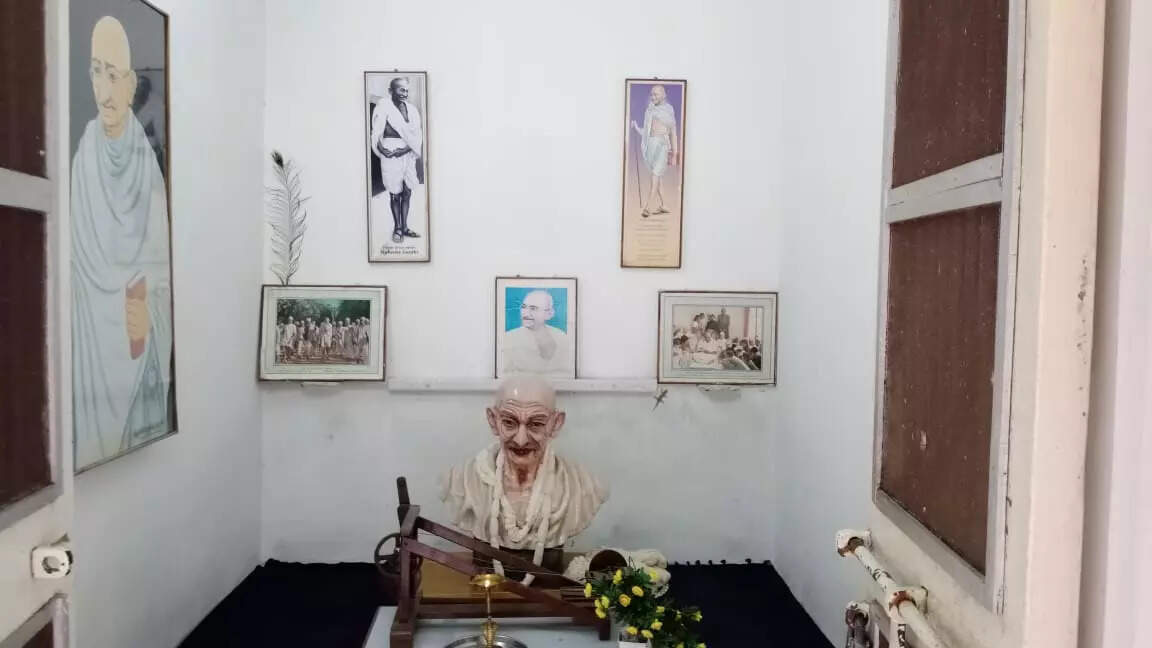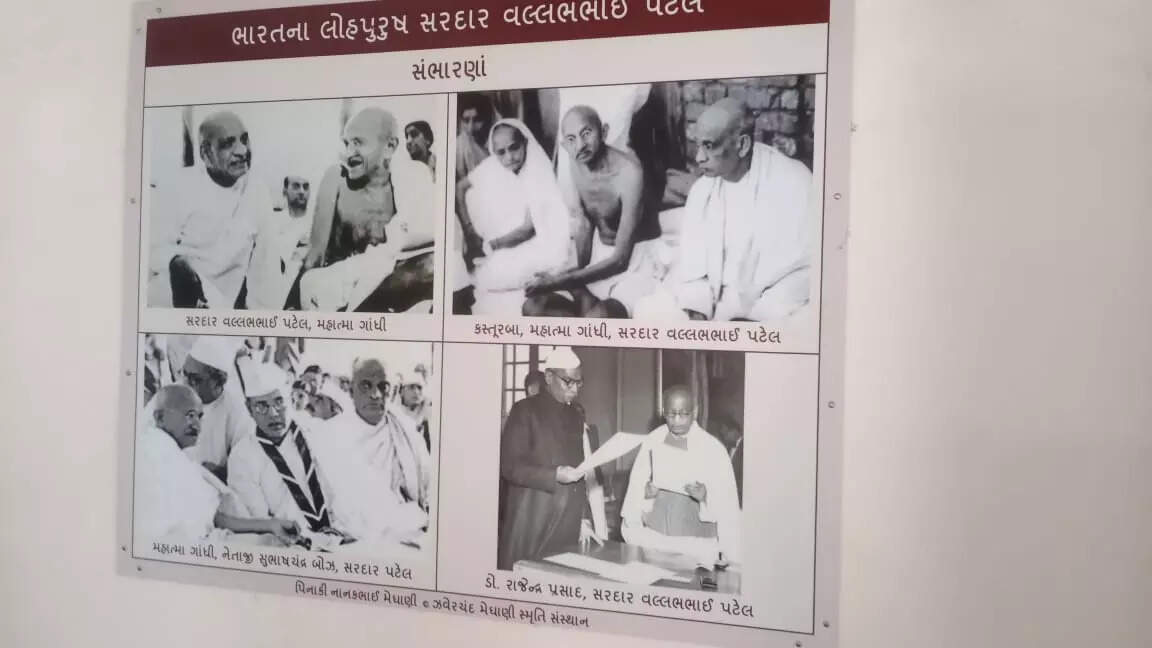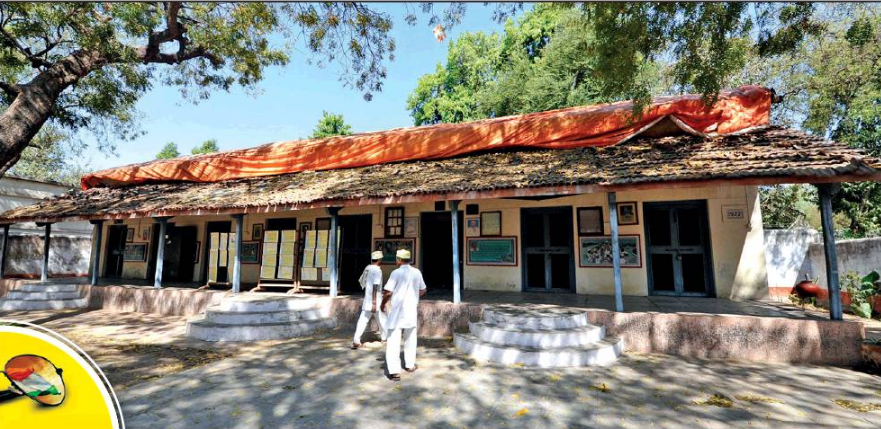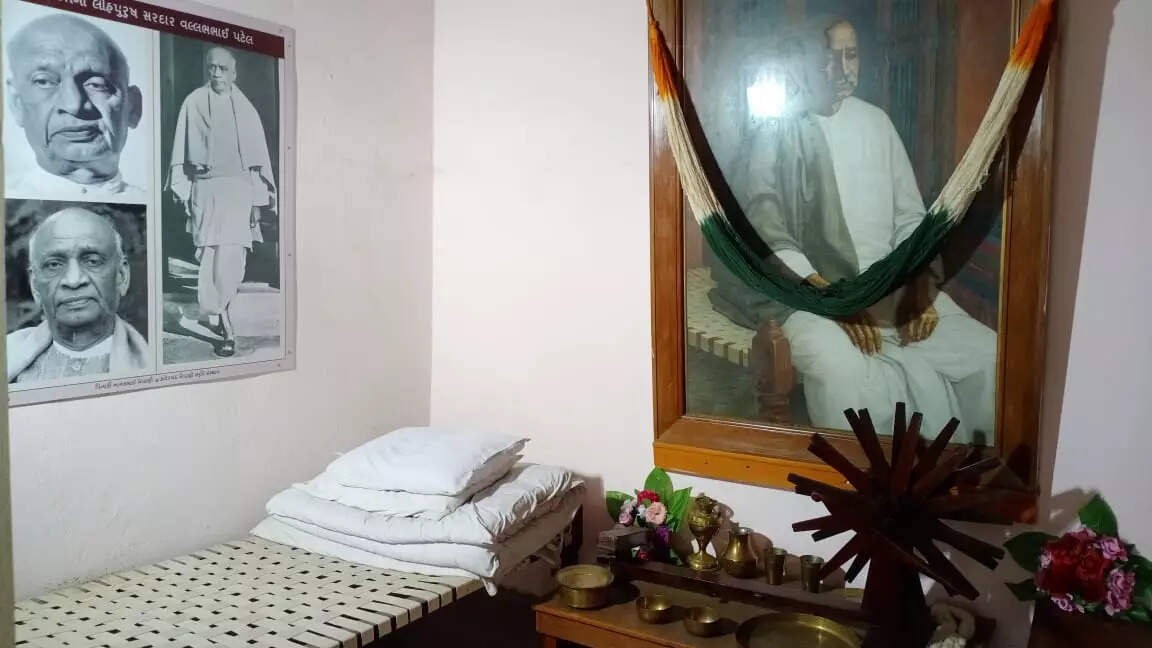
AHMEDABAD: In June 1917, Mahatma Gandhi shifted his Satyagraha Ashram from Kochrab to the banks of Sabarmati River. In his autobiography, he mentions “its (the site’s) vicinity to the Sabarmati Central Jail was for me a special attraction. As going to jail is understood to be normal for many Satyagrahis, I liked this location. And I knew that sites selected for jails have generally clean surroundings”.
Indeed, the jail witnessed Mahatma’s first imprisonment in India in 1922 when he was lodged from March 11 to 20 on charges of sedition. He came back to Sabarmati Central Jail later for only a day on August 1, 1933 before he was sent to Yerawada jail in Pune.

Today, the Gandhi Yard at Ahmedabad Central Jail stands witness to the landmark. Rohan Anand, superintendent of the prison, said that a lamp and incense sticks are burnt in the morning and evening daily amid bhajans by the inmates. “The inmates also keep the yard clean which also houses a small museum of sorts – including copies of his prison order, his correspondence and a few pictures/ illustrations,” he said.
Gandhi Yard today is the site of reforming prisoners’ lives – while a section is used as a classroom for distance education initiative. Prison inmates, mostly convicts, also record audio books at a studio here for persons with visual impairment.

Vivek Desai, managing trustee of Navajivan Trust founded by Mahatma, said that the prison since its inception has seen one of the highest concentrations of freedom fighters among the Indian prisons during India’s freedom struggle.
“Among the first high-profile inmates was Bal Gangadhar Tilak who was brought to the jail in 1908 on charges of sedition. According to records, he celebrated his 53rd birthday here. In later years, luminaries ranging from Sardar Vallabhbhai Patel to Kakasaheb Kalelkar and from Mahadev Desai to Ravishankar Maharaj were lodged here,” he said.
Indeed, the jail witnessed Mahatma’s first imprisonment in India in 1922 when he was lodged from March 11 to 20 on charges of sedition. He came back to Sabarmati Central Jail later for only a day on August 1, 1933 before he was sent to Yerawada jail in Pune.

Dr KLN Rao, ADGP (prisons), said that the department has recently launched a book on the history and present of state prisons. “It’s a historic jail constructed in 1894 – one of the first few by the British across India. As we are celebrating the 75th year of India’s independence, the prison today is custodian of the stalwarts’ memories in the form of different yards – Gandhi Yard, Tilak Yard, Sardar Yard, etc. They all are memorials today which are kept in pristine condition,” he said, adding that the women's prison also has Kasturba Barrack where Mahatma’s wife was lodged.







